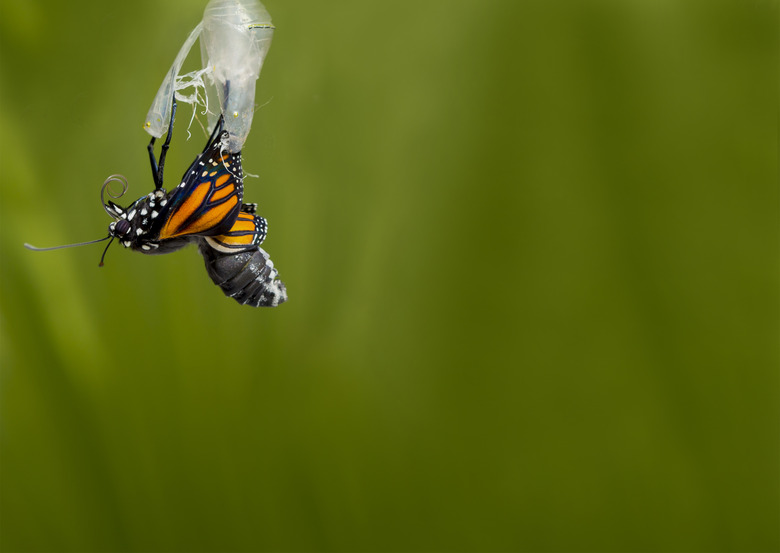How To Help A Butterfly Out Of Cocoon
Everyone knows the heartwarming story of a tiny caterpillar that spins a cocoon, grows wings and blossoms into a beautiful butterfly. Sometimes, along the way, those caterpillars hit a few speed bumps. If you raise young butterflies and notice that some are having trouble freeing themselves from their cocoons, you can take a few steps to help those caterpillars spread their wings.
TL;DR (Too Long; Didn't Read)
In rare cases, you may need to use a tweezer to cut a small slit in a caterpillar's chrysalis to allow it to emerge, spread its wings and start its life as a butterfly.
Good Hatching Conditions
Good Hatching Conditions
A cocoon is also known as a pupa or chrysalis. Butterflies stay in their pupae for different lengths of time, depending on factors like the type of butterfly and the time of year they spin their chrysalises. Typically, you'll be able to tell when a butterfly is ready to emerge because the chrysalis turns either dark or clear.
When that happens, make sure the conditions are hospitable for the butterfly to emerge. Keep the space humid by occasionally misting it with warm water. Also, make sure the chrysalis is in a space big enough for its wings to expand both vertically and horizontally without touching anything in the surrounding container. If those wings don't have enough room to expand, they risk not drying or forming correctly, which prevents the butterfly from eventually flying.
If the pupa fell off a stick during its growing process, you can reattach it high up on the stick with a tiny drop of nontoxic glue.
Coaxing a Butterfly
Coaxing a Butterfly
When a butterfly is ready to emerge, it should take just a few minutes for the animal to break free and spread its wings. If you notice that some are taking longer, possibly because they're weaker than they should be or have suffered from a disease, you might be able to help.
If you see one that has struggled to emerge for more than 15 minutes, try to gently make the hole of the chrysalis bigger so that the butterfly doesn't have to work so hard. Confirm that the chrysalis is firmly planted to a high spot on its stick, and then carefully use a tweezer or small pin to slit the chrysalis. Take care not to get the sharp edge of the instrument anywhere near the butterfly's wings.
Cut the slit gradually, making sure that you don't split it completely since the butterfly still needs to struggle a bit toward the end so it can spread its wings rather than fall straight to the ground.
Know Your Limits
Know Your Limits
Unfortunately, not all caterpillars make it to the butterfly stage. Despite your attempt to help, the butterfly may not emerge, possibly because it has succumbed to infection or dehydration. The most humane way to dispose of the animal is to leave it outside near a flower or bush, where it can die a natural death.
Cite This Article
MLA
Dragani, Rachelle. "How To Help A Butterfly Out Of Cocoon" sciencing.com, https://www.sciencing.com/butterfly-out-cocoon-6915021/. 7 May 2018.
APA
Dragani, Rachelle. (2018, May 7). How To Help A Butterfly Out Of Cocoon. sciencing.com. Retrieved from https://www.sciencing.com/butterfly-out-cocoon-6915021/
Chicago
Dragani, Rachelle. How To Help A Butterfly Out Of Cocoon last modified August 30, 2022. https://www.sciencing.com/butterfly-out-cocoon-6915021/
